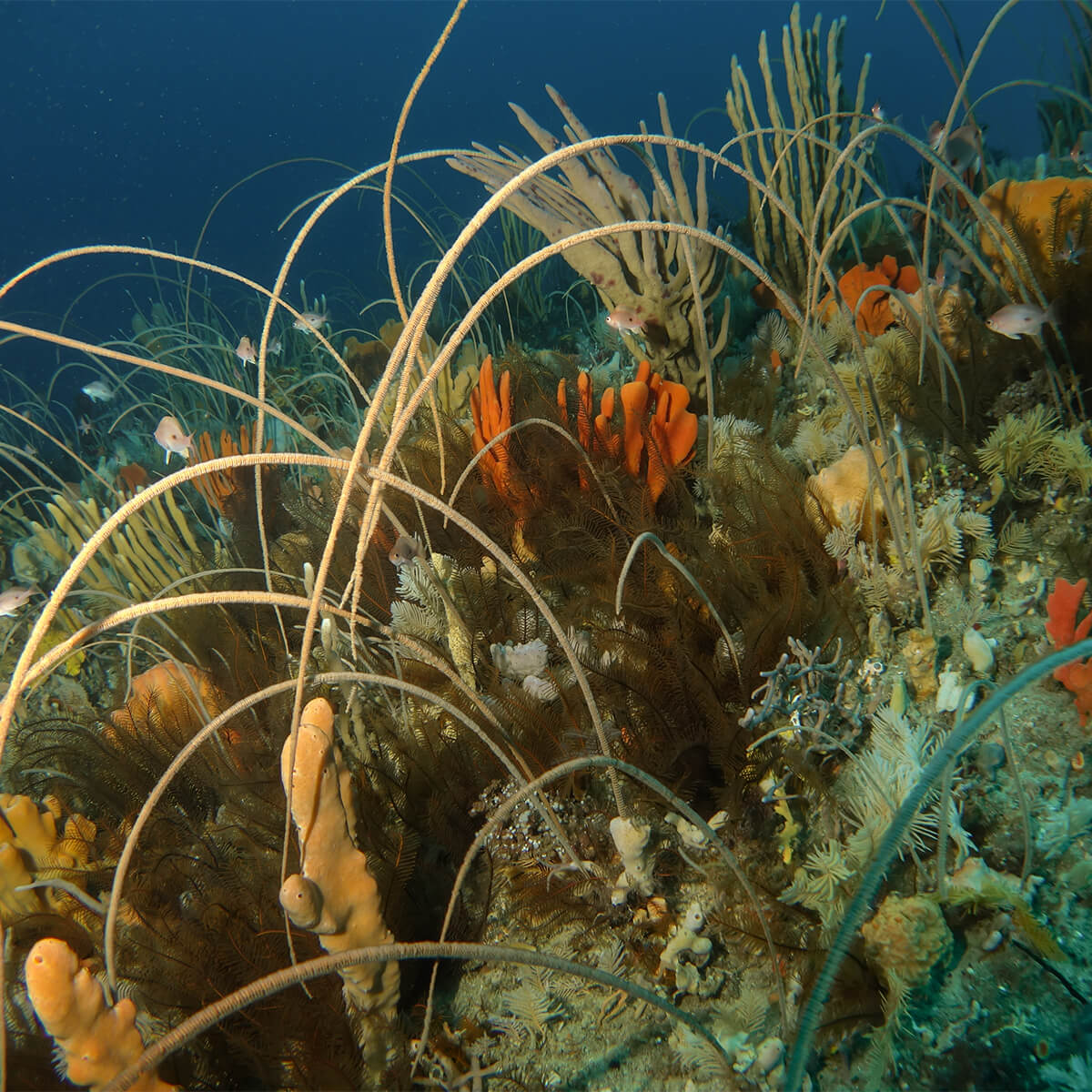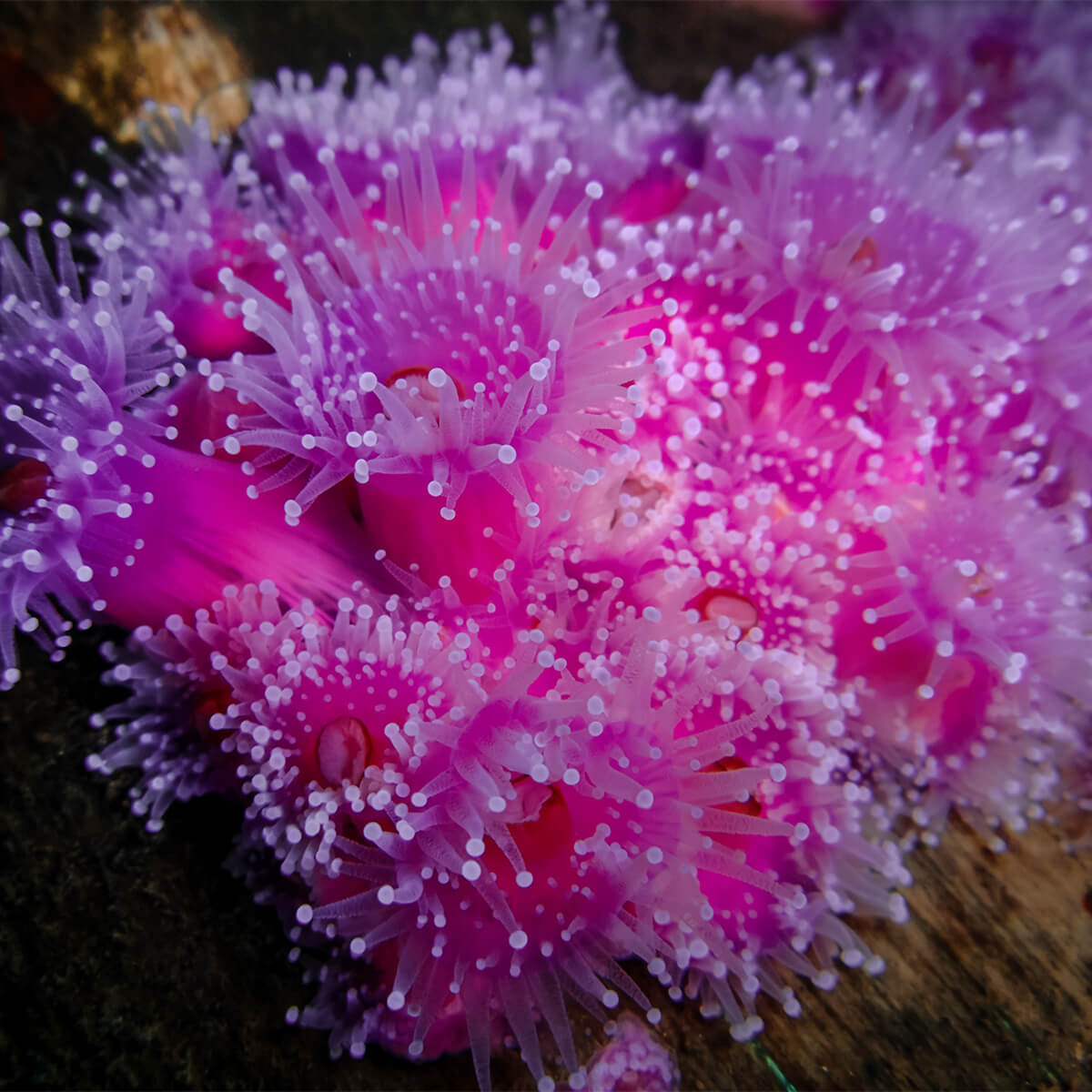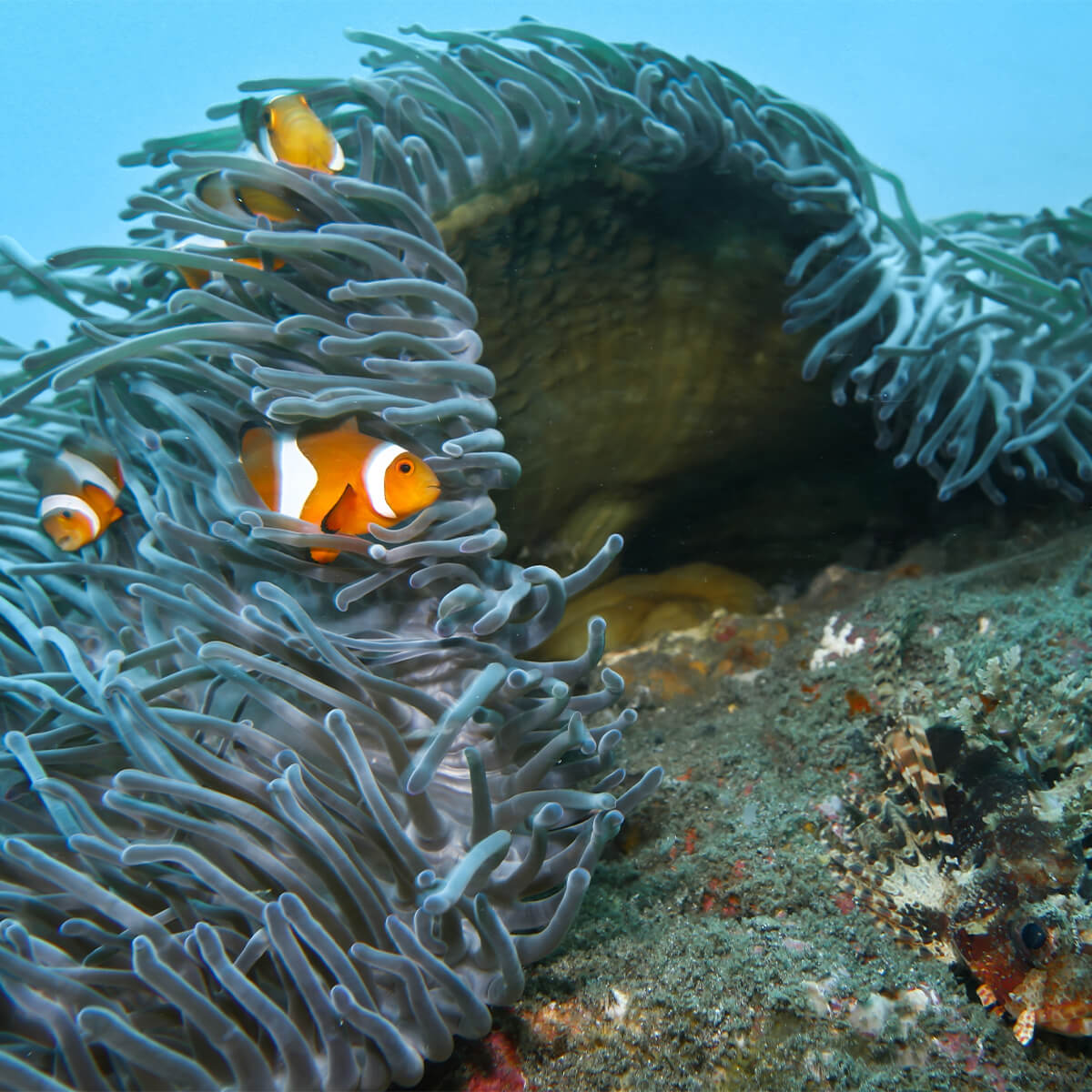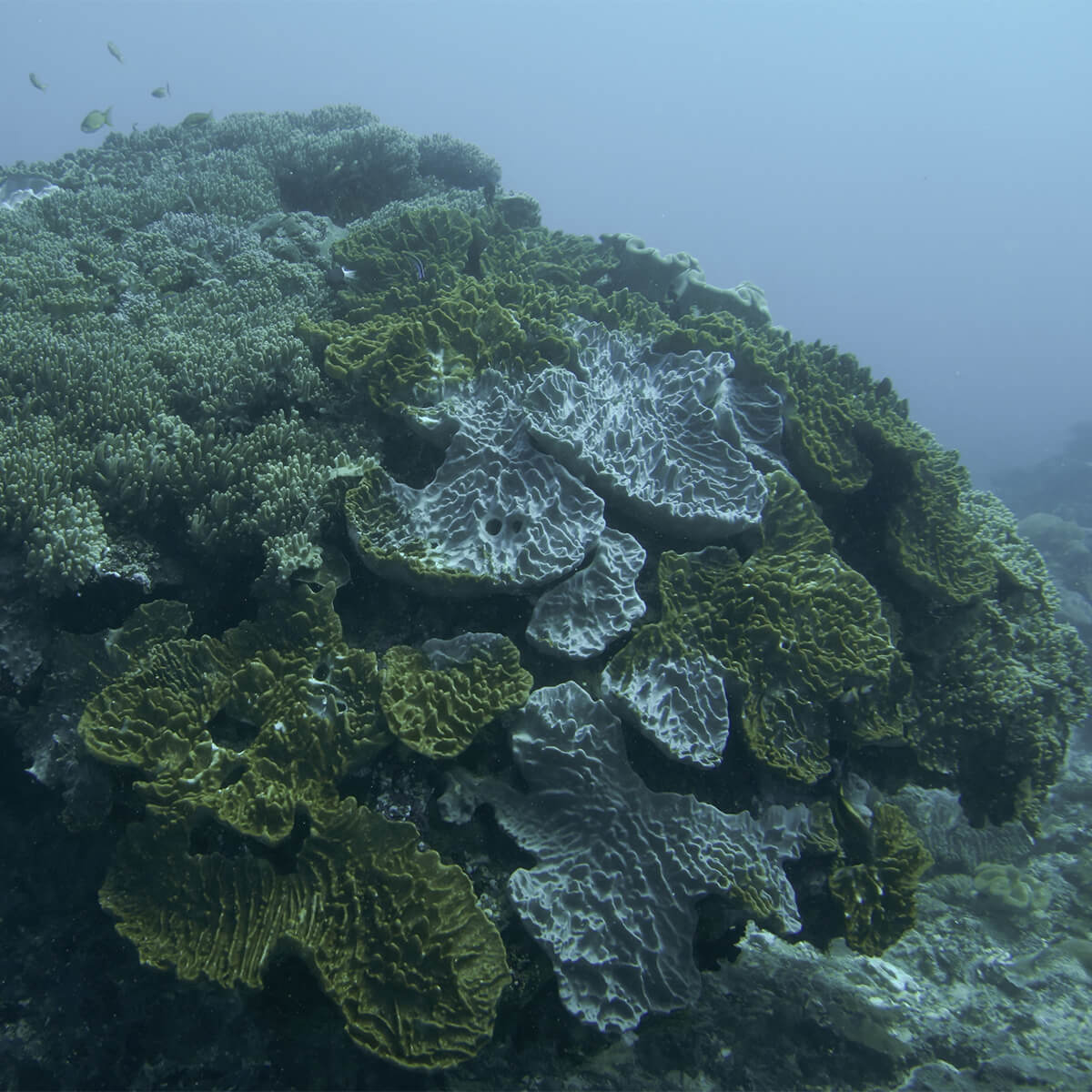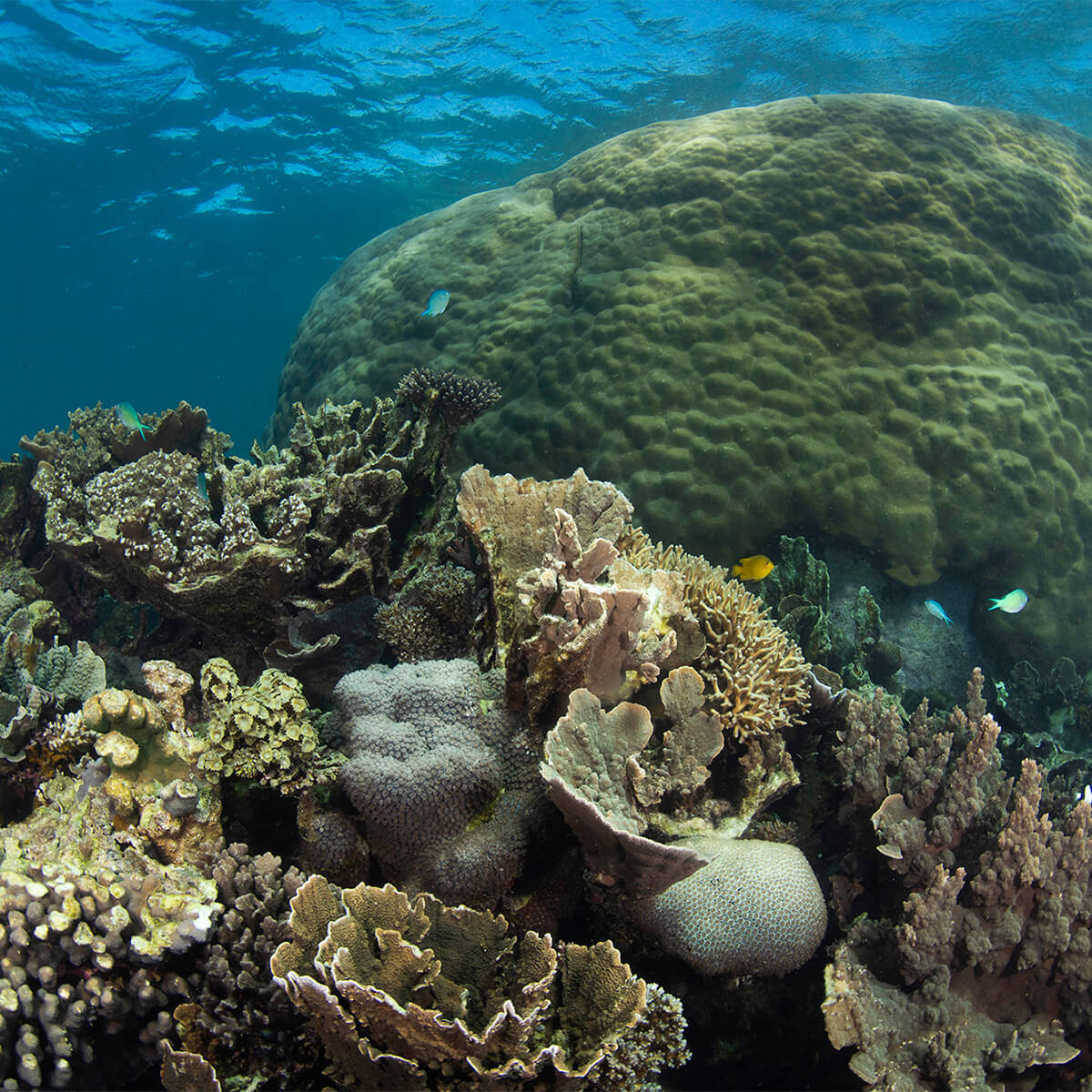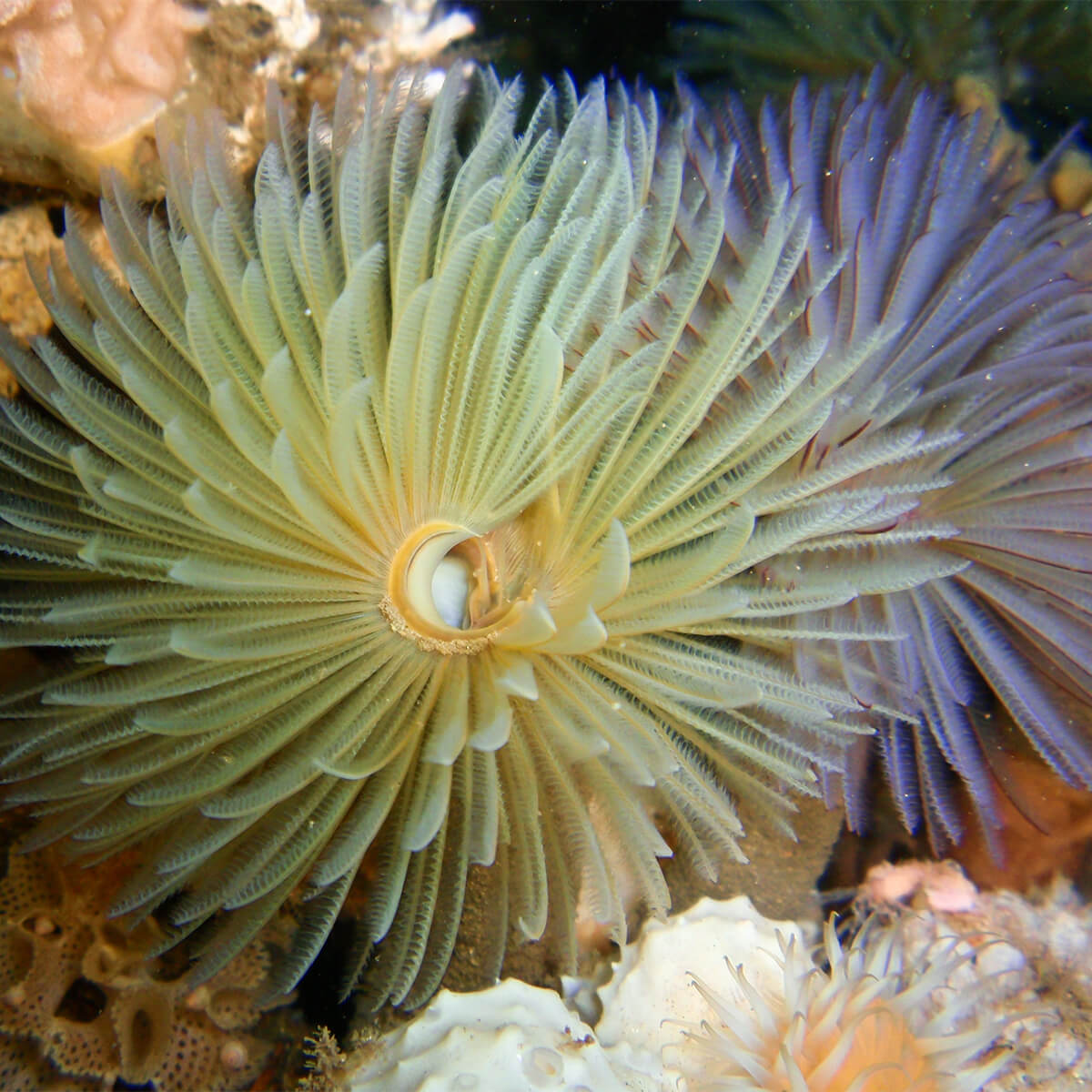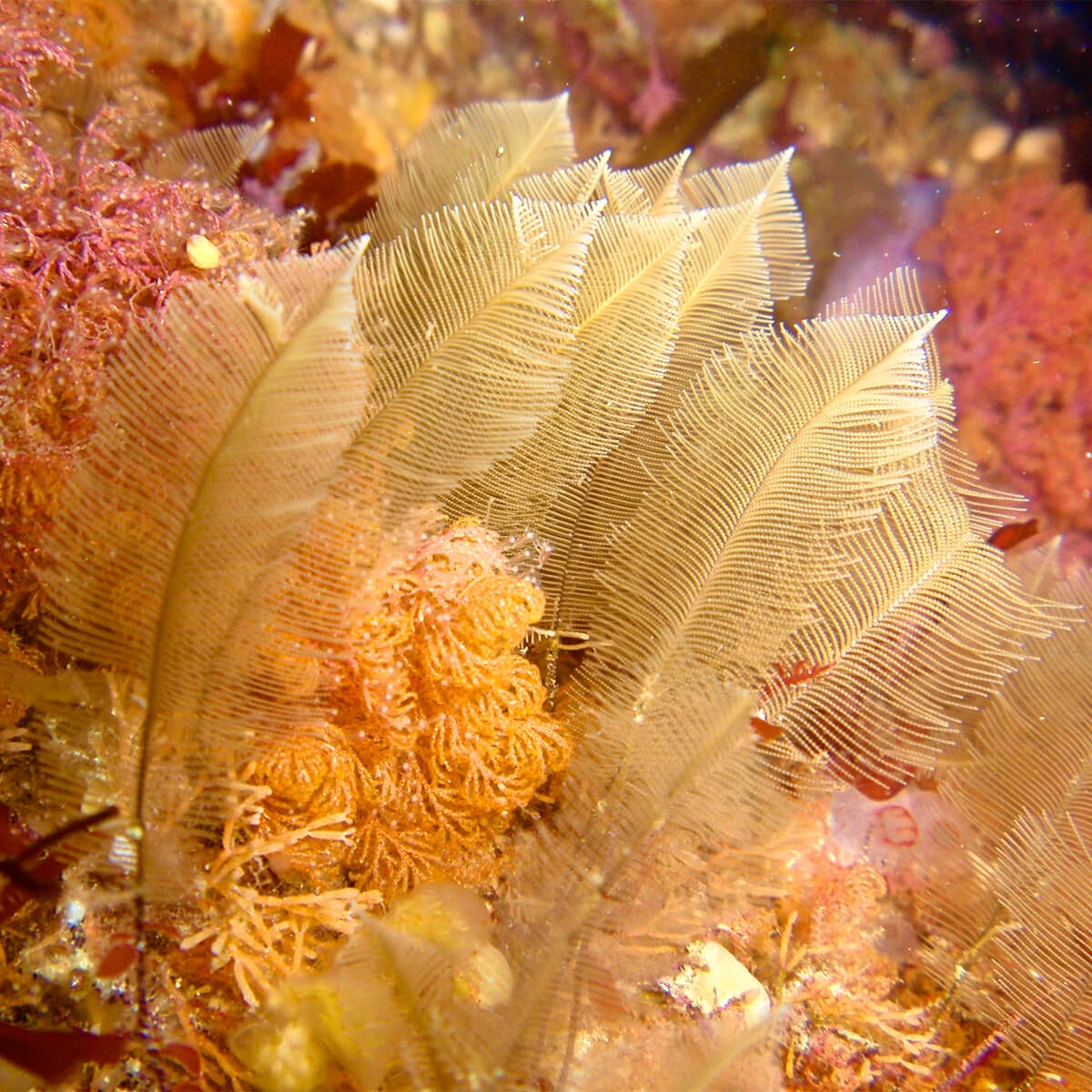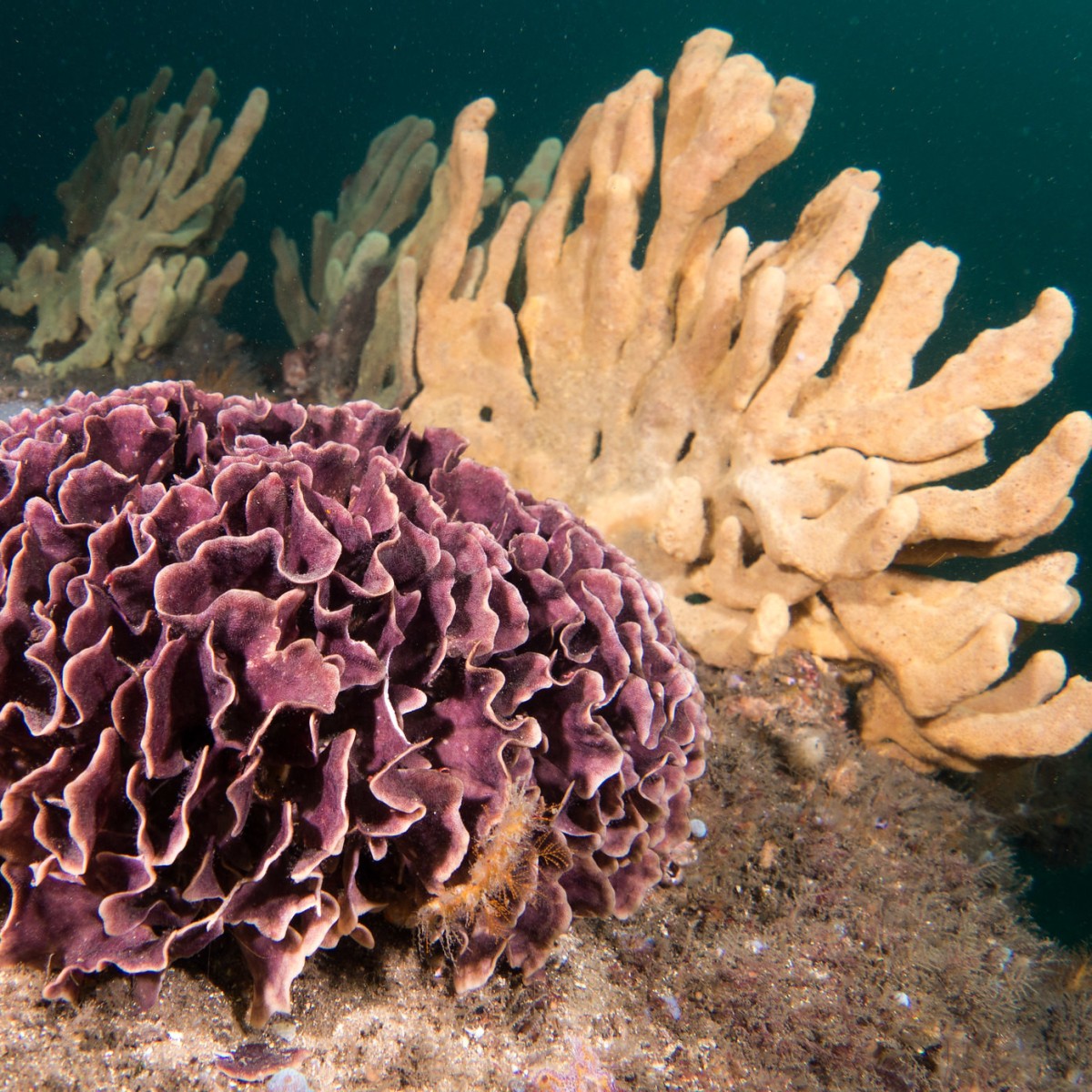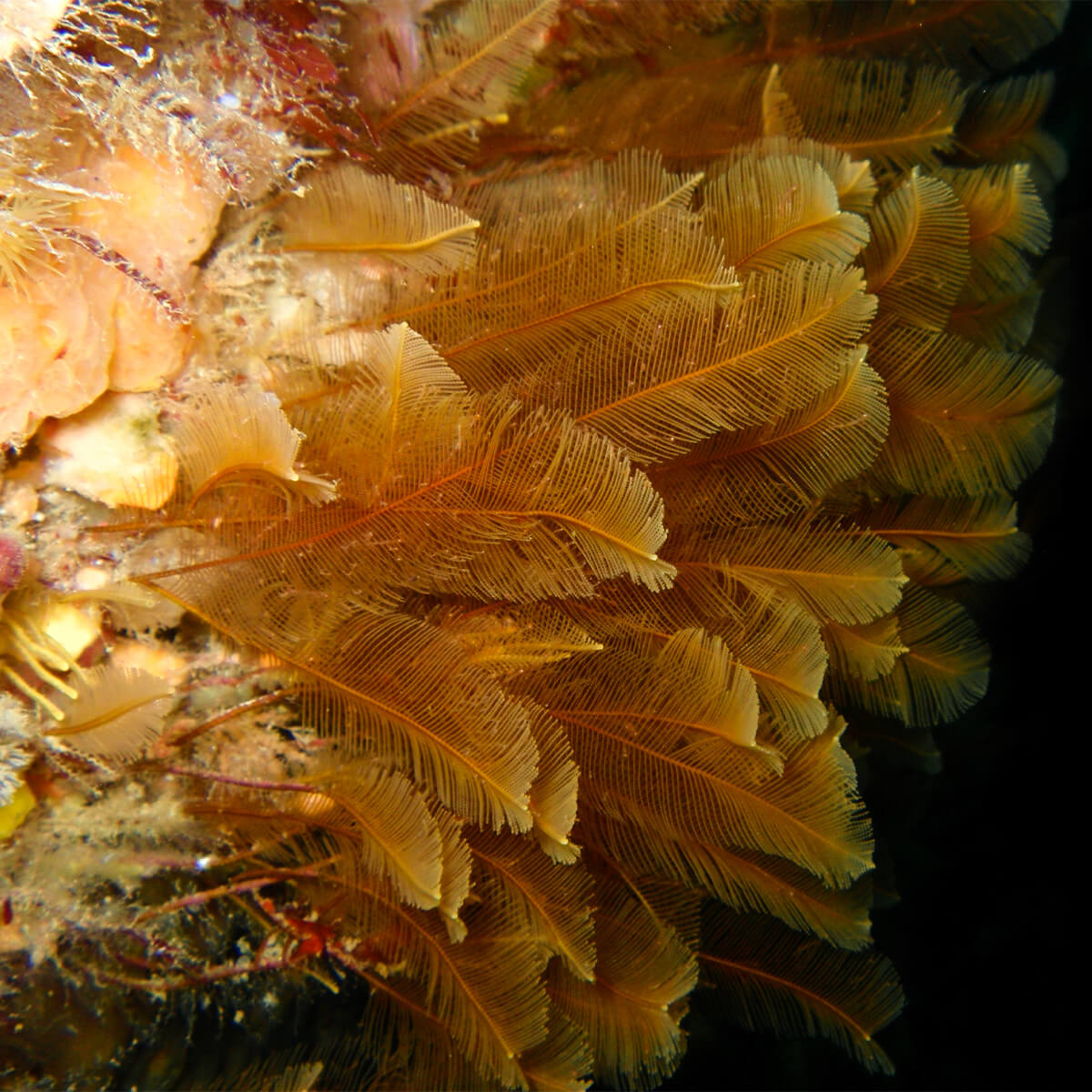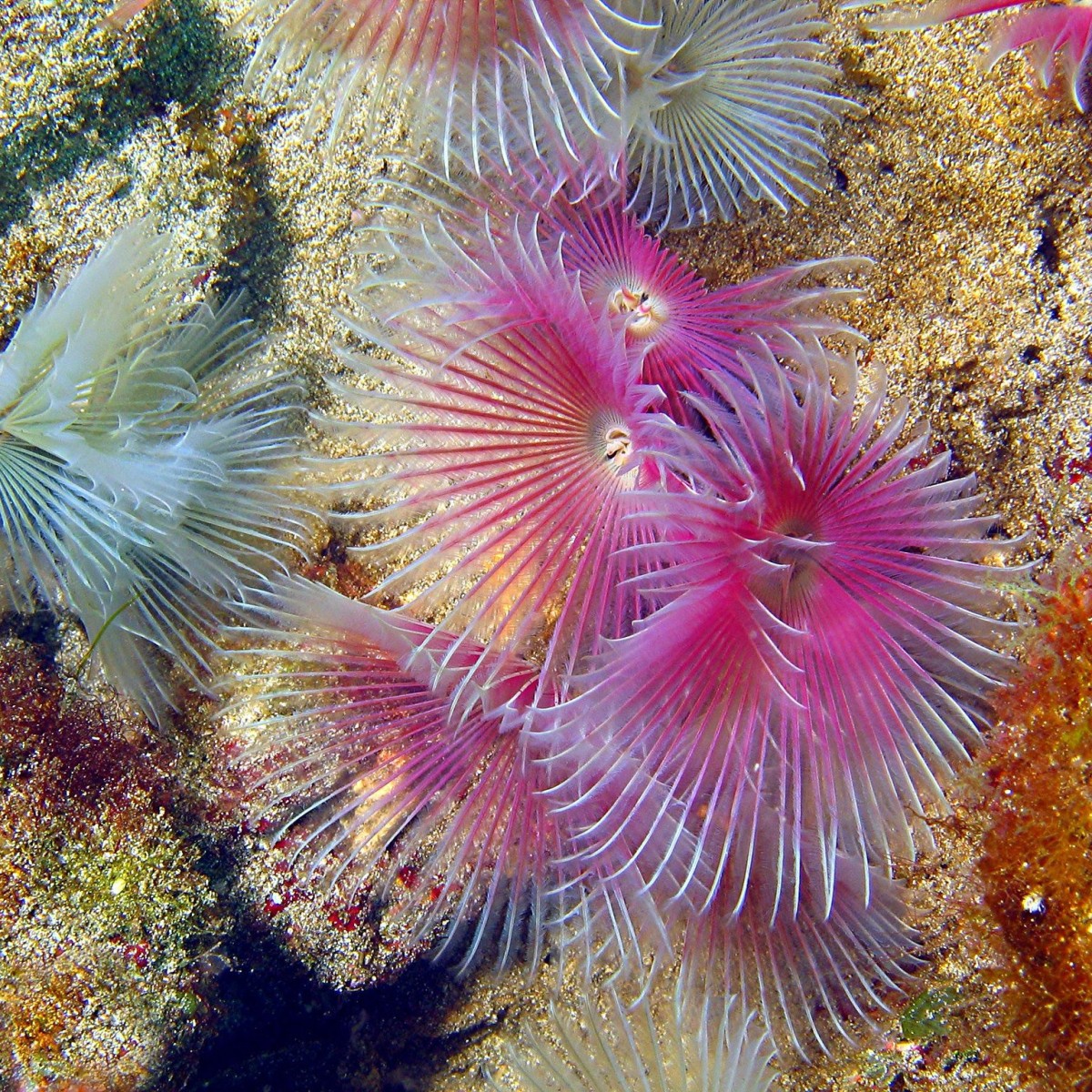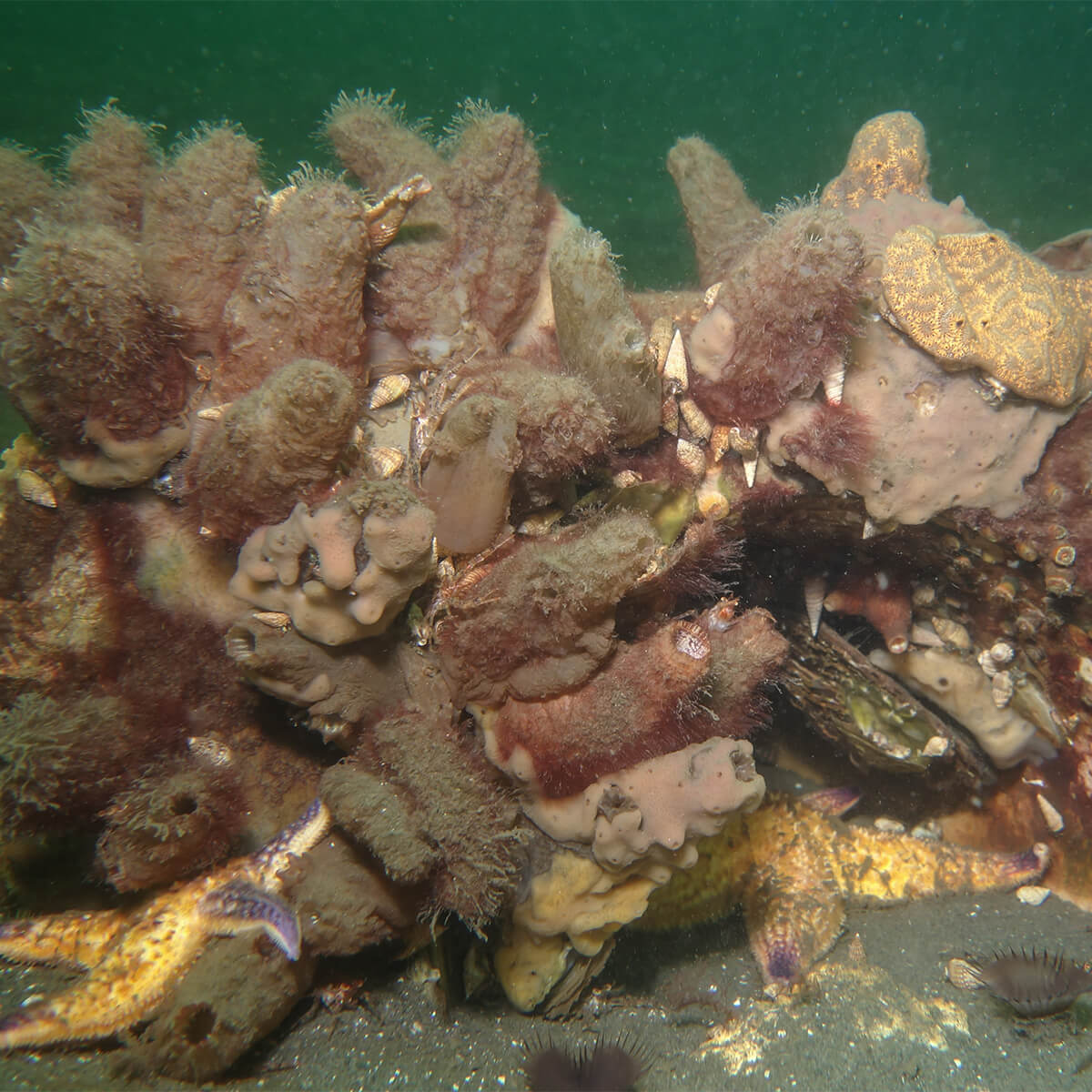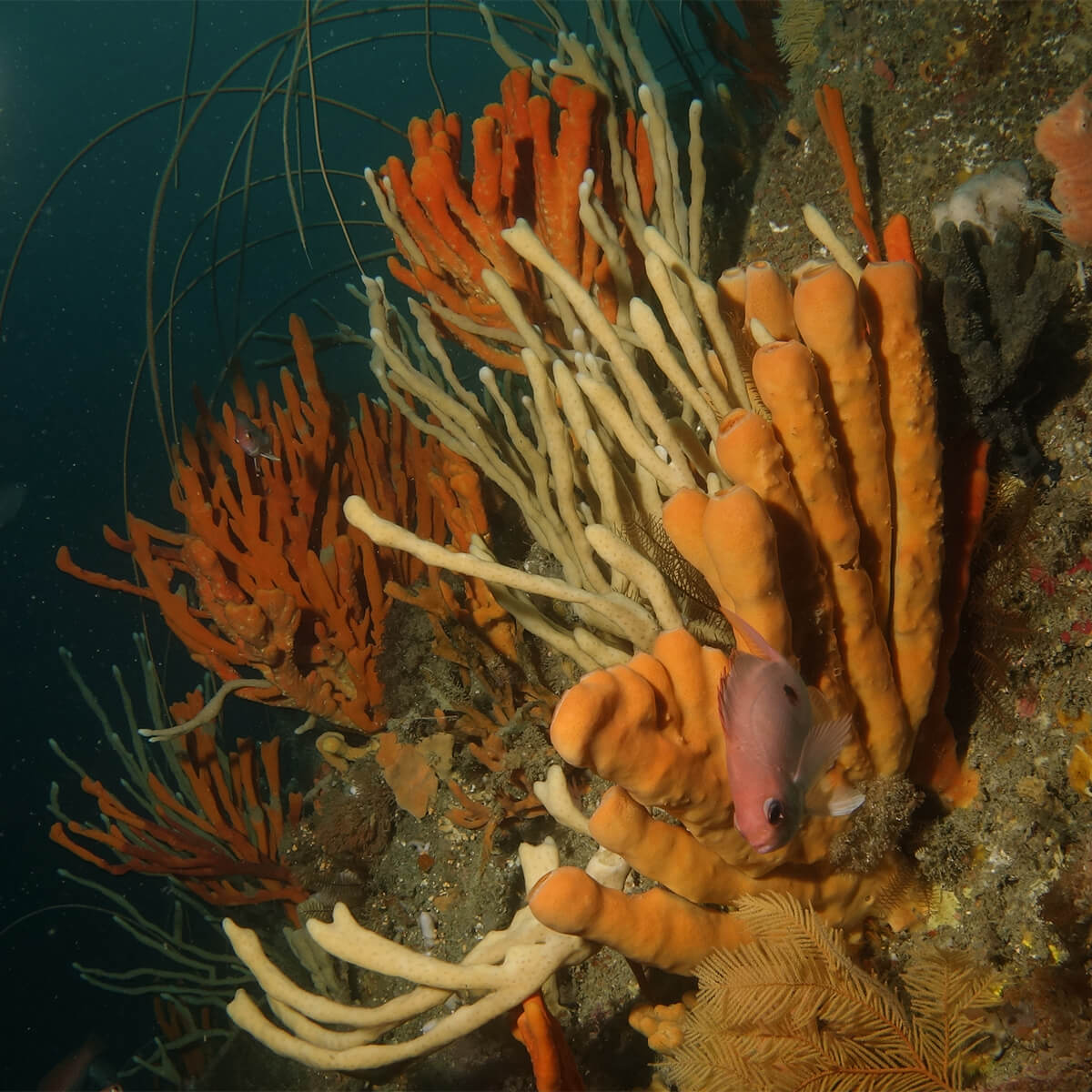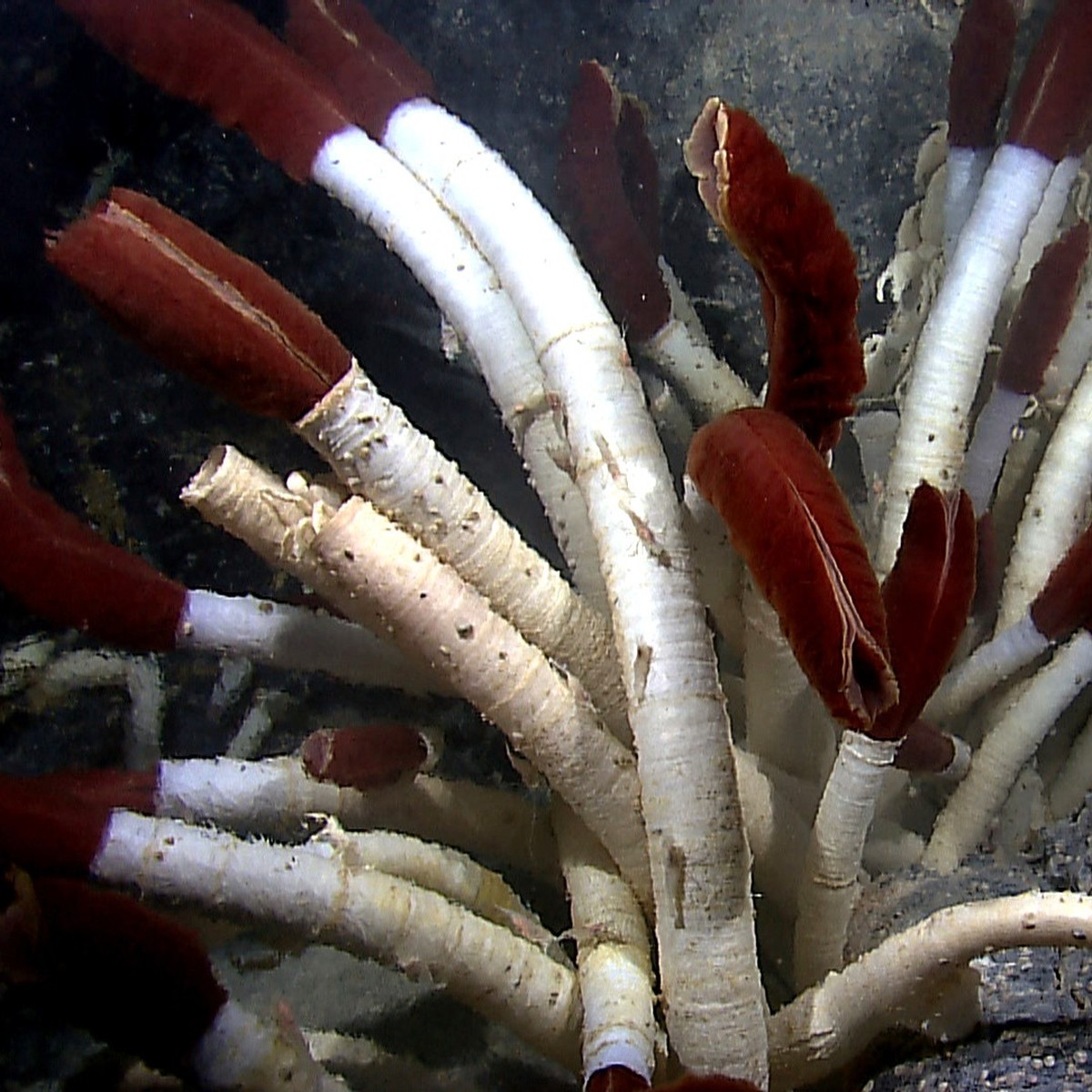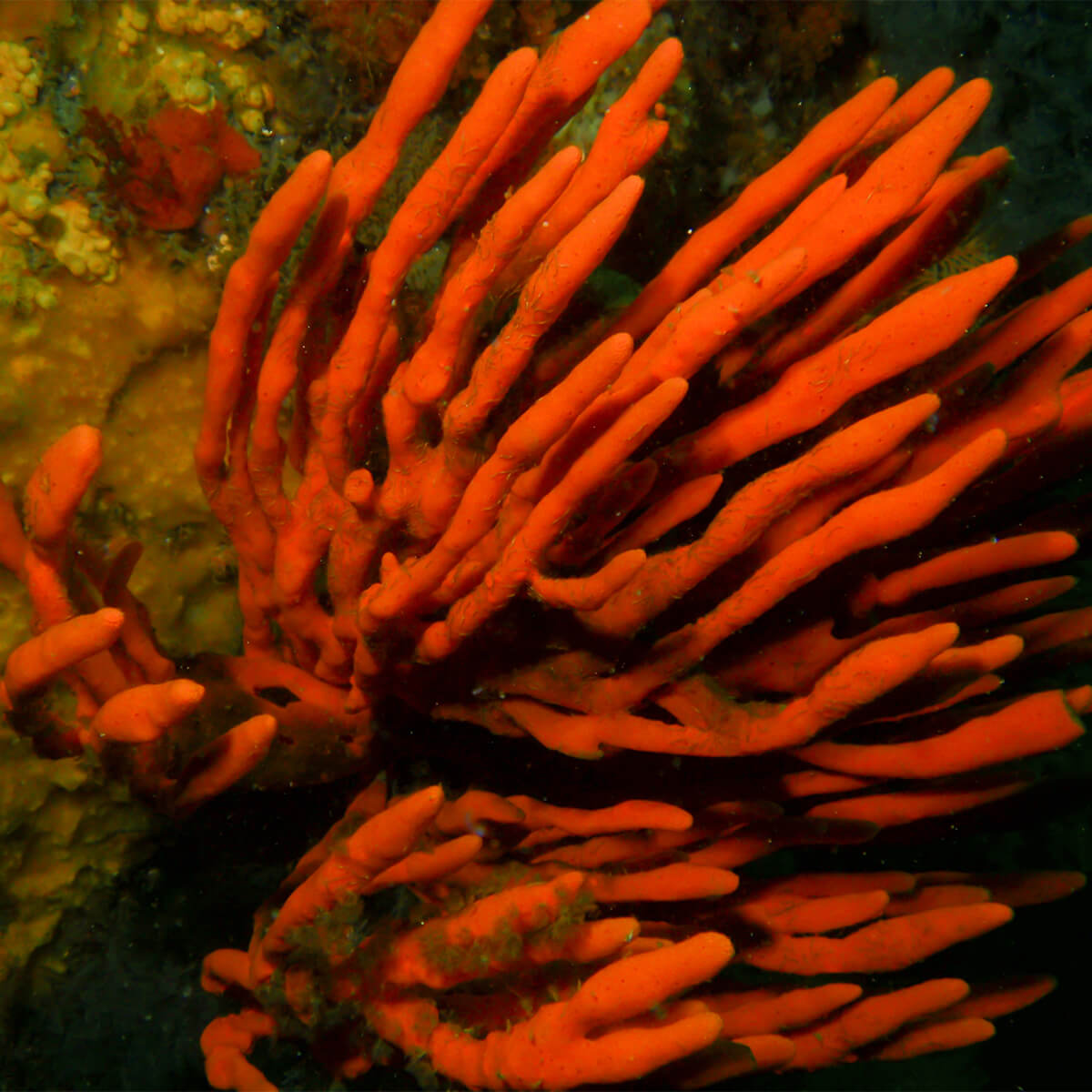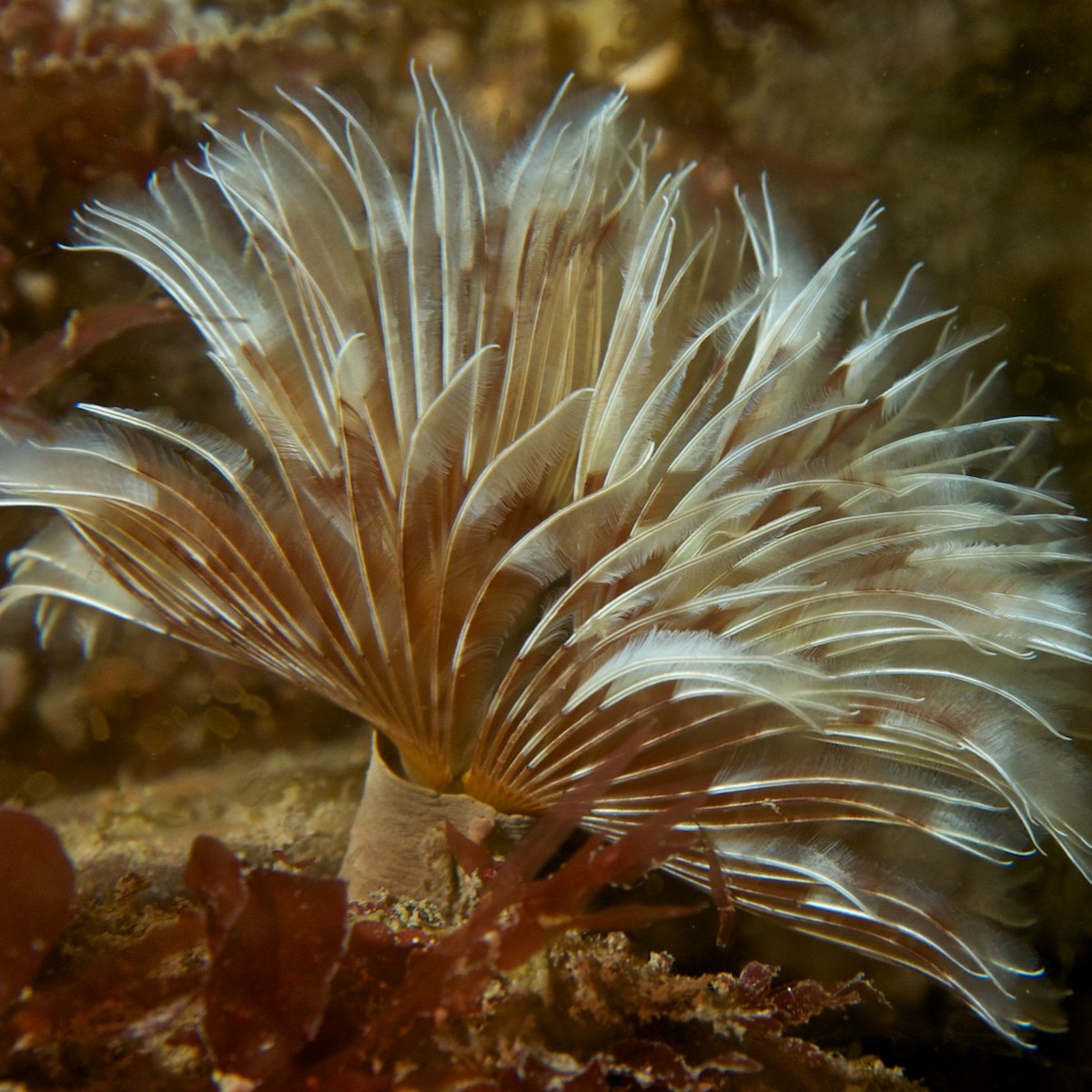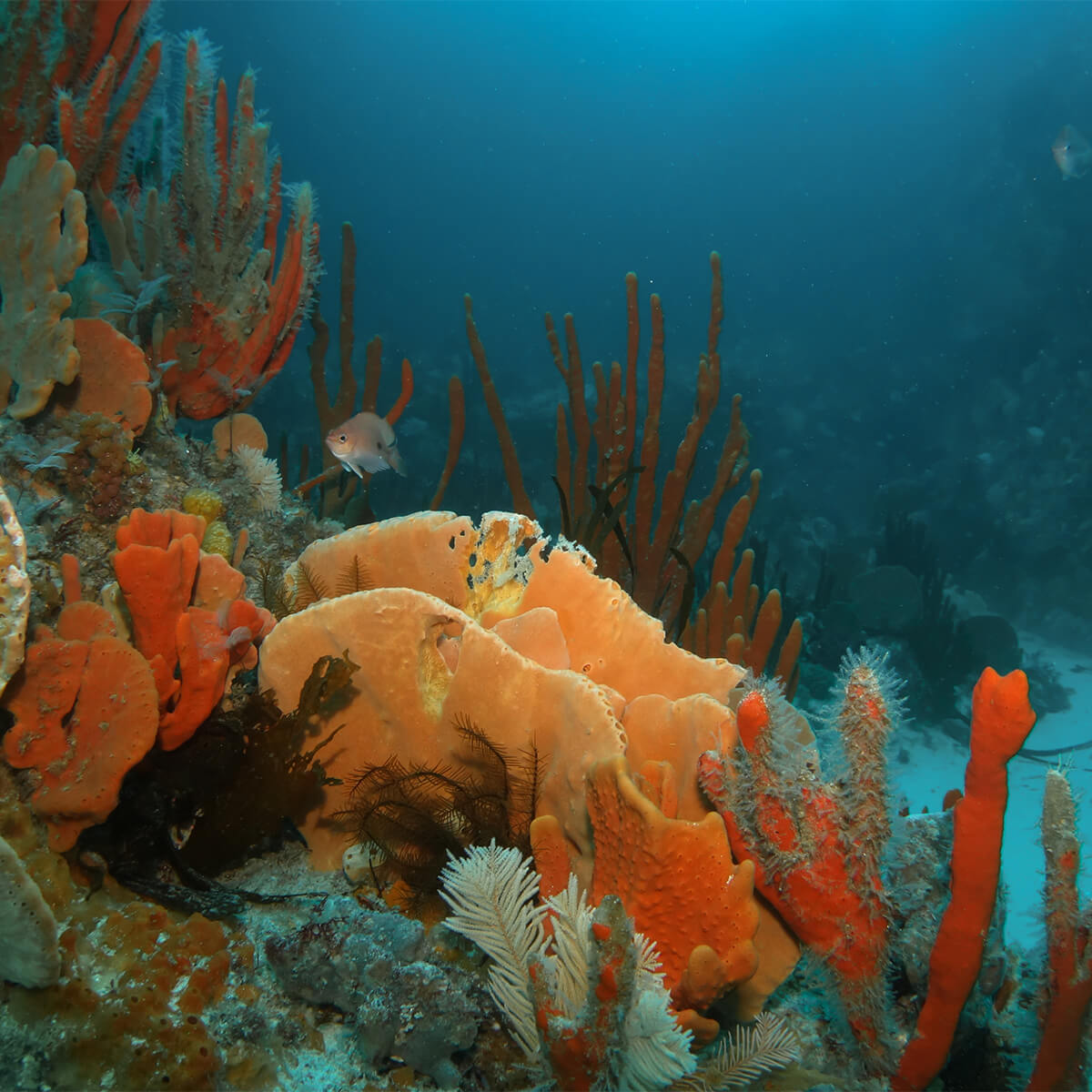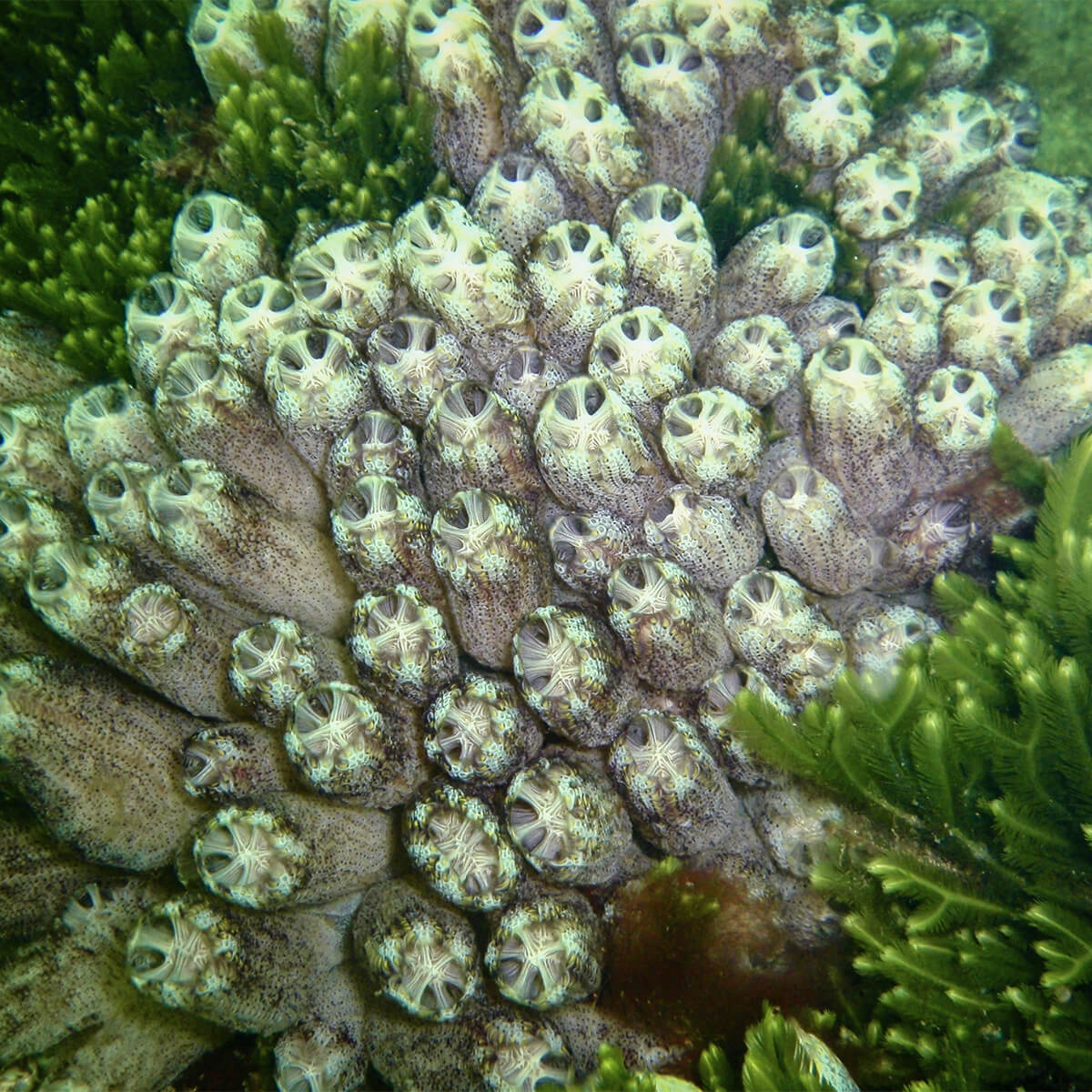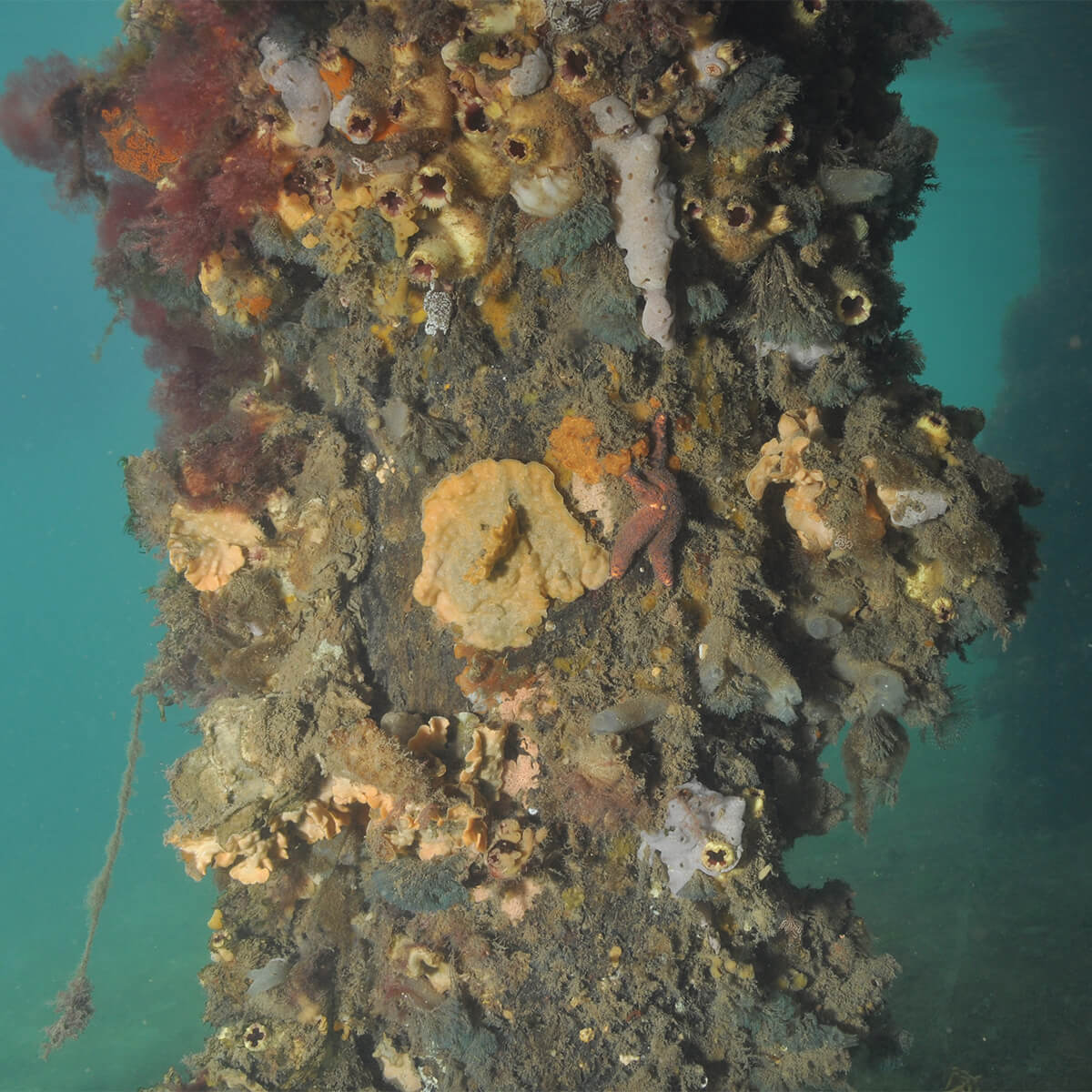A filter feeder habitat is characterised by biota dominated by organisms that feed by drawing water through a specialised structure and filtering out small particles and organisms in the water column.
Level 4 definitions
- Ascidians: An area dominated by ascidians (also known as seasquirts or tunicates; Class Ascidiacea), a diverse group of solitary or colonial animals, the adults of which are sessile. Ascidians are bag-like filter feeders, drawing water in and out through separate inhalant and exhalent siphons. They occur from intertidal to deep ( > 2000 m) subtidal waters, and can reach high abundances.
- Bryozoans: An area dominated by ascidians (also known as seasquirts or tunicates; Class Ascidiacea), a diverse group of solitary or colonial animals, the adults of which are sessile. Ascidians are bag-like filter feeders, drawing water in and out through separate inhalant and exhalent siphons. They occur from intertidal to deep ( > 2000 m) subtidal waters, and can reach high abundances.
- Coral Biota: An area dominated by coral, a colonial marine Cnidarian from the Order Scleractinia, Antipatharia, Alcyonacea or Pennatulacea, where colonies are composed of individual polyps that are connected by living tissue. In some, corals polyps excrete an exoskeleton and are embedded within this structure, while others possess large amounts of gelatinous tissue and are much softer.
- Mixed Filter Feeder Community: A habitat where the dominance of a single Non-molluscan Filter Feeder group (Non-coral Cnidaria, Corals, Worms, Bryozoans, Sponges, Ascidians) cannot be identified, or where the composition/biomass/surface coverage of the second-most dominant group lies within 30 % margin of the most-dominant group.
- Non-Coral Cnidaria: Areas dominated by anemones, hydroids, hydrocorals or other benthic Cnidaria that are not corals.
- Sponges: An area dominated by sponges, simple multicellular animals of the Phylum Porifera that live attached to the seafloor. Their soft and porus body structure is supported by a framework of fibrous proteins, and spicules of calcium carbonate or silica. Sponges are morphologically diverse, but all draw in a current of water using specialised flagella and extract nutrients and oxygen from the flow.
- Worm Biota: An area dominated by sessile marine worms, in particular tube dwelling polychaetes. These sedentary polychaetes have highly differentiated bodies and most live in secreted tubes attached to the seafloor.

